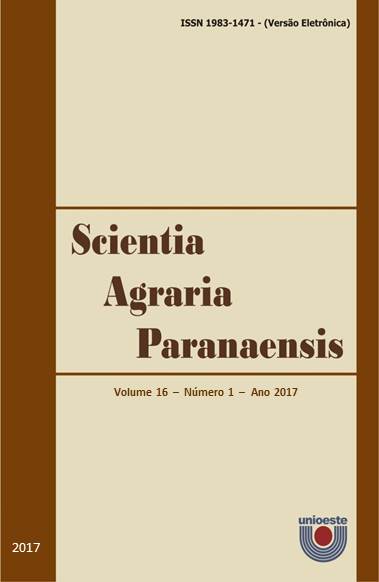Implications of the use of glycerin on fed of finishing pigs: review
Palavras-chave:
coproducts, metabolism, glycerol, performance.Resumo
The objective was to review the production process, characterization, nutritional value, metabolism, limitations of glycerin use and its effects on performance and carcass and meat characteristics of pigs. The glycerol molecule appears as a viscous, colorless, odorless and hygroscopic liquid, with a sweet taste, soluble in water and alcohol. The chemical composition and glycerol content of glycerin depend on the type of raw material used and the efficiency of the biodiesel production process. Glycerol as a nutritional component of dietary fat is absorbed as a constituent of monoglycerides after partial hydrolysis of triglycerides; undergoes action of the enzyme glycerol kinase, converted to glycerol 3-phosphate that may follow the route of glycolysis when the animal is in energy deficit; or be destined to the deposition or excretion of fat when it is with excess of energy. Glycerin may exhibit high metabolizable energy content, being able to be a substitute of corn in pig diets. The effect of glycerin on the performance and characteristics of pig carcass and meat depends on the type, inclusion level and weight range of the animals, but in general their use in the diets does not reflect to the detriment. Concern about the use of glycerin in animal feed is related to the residual levels of biodiesel production affecting the composition of glycerin in sodium, potassium and methanol, as well as its cost in relation to corn. The use of glycerin in finishing pig feed is a viable alternative since its characteristics are respected.
Downloads
Arquivos adicionais
Publicado
Como Citar
Edição
Seção
Licença
Aviso de Direito Autoral Creative Commons
Política para Periódicos de Acesso Livre
Autores que publicam nesta revista concordam com os seguintes termos:
1. Autores mantém os direitos autorais e concedem à revista o direito de primeira publicação, com o trabalho simultaneamente licenciado sob a Licença Creative Commons Attribution que permite o compartilhamento do trabalho com reconhecimento da autoria e publicação inicial nesta revista.2. Autores têm autorização para assumir contratos adicionais separadamente, para distribuição não-exclusiva da versão do trabalho publicada nesta revista (ex.: publicar em repositório institucional ou como capítulo de livro), com reconhecimento de autoria e publicação inicial nesta revista.
3. Autores têm permissão e são estimulados a publicar e distribuir seu trabalho online (ex.: em repositórios institucionais ou na sua página pessoal) a qualquer ponto antes ou durante o processo editorial, já que isso pode gerar alterações produtivas, bem como aumentar o impacto e a citação do trabalho publicado (Veja O Efeito do Acesso Livre).
Licença Creative Commons
Esta obra está licenciada com uma Licença Creative Commons Atribuição-NãoComercial-CompartilhaIgual 4.0 Internacional, o que permite compartilhar, copiar, distribuir, exibir, reproduzir, a totalidade ou partes desde que não tenha objetivo comercial e sejam citados os autores e a fonte.


